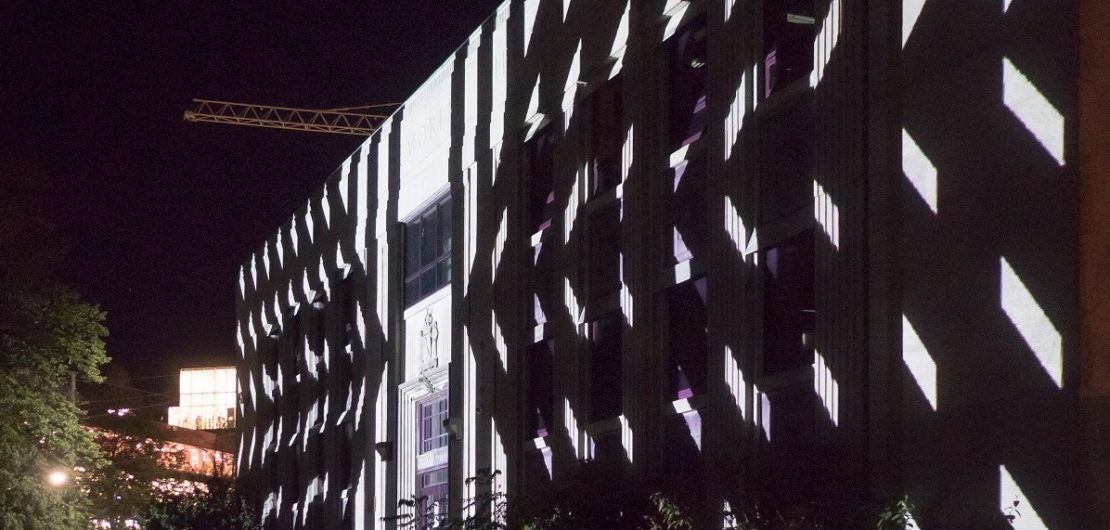
Hartung | Trenz is one of the participating artists’ teams in the first edition of //RESPONSIVE International Light Art Project Halifax. Their works can be seen at Art Gallery of Nova Scotia and at the Memorial Library of Halifax.
//We are interested in sites and contexts that are charged with history and where visual traces are limited or missing. We like to learn and to understand what shaped a site and what didn’t leave a touch. And we are looking for both, the parts that are visible as well as the parts that are neglected, ignored or forgotten. We enjoy this discovery mode and we back it up with research, with reading and with talking to people that link to the site or the context.
When approaching a new project, we start to ask a lot of questions and in the same way and the same time, we explore the interplay of the site and the possibilities of projection. And the better both work, the more information and associations surface and the more questions dive up. Usually the midst of this entanglement becomes our working ground. From there, where we are not sure to understand anything, we start to develop our works. Therefore, they are a moment of observation, an invitation to see and to discuss rather than a judgmental statement.
Making art is articulating a subjective position and part of the research is to understand ourselves. What are we looking for? Why are we interested? How do we refer to? What do we choose? What can we see? Can esthetics and poetics help to see more? In our case, we are always two and we are working together for almost 20 years. Exchange, discussion and synchronization are essential for our work. This means that we are well trained to be in dialogue, with each other as well as with a site or a context. We should come to an agreement, otherwise there is no work. This is a demanding and stimulating process, not always easy and fun, but very good for our attitudes and for our works. And very giving for our personal and artistic development.
Throughout our researches, we learned to be open to information. We never treat a volume of information as a final one, but as a temporary only. We are aware of all the limitations of time, of accessibility, of interest and the difficulties that raise from that. We learned to live with open amounts of data and with the risk of overlooking certain aspects. It corresponds with our interest in language in spoken and written form. All languages have their own gaps – there are parts of what can be addressed and then there are all other ones that cannot. Typography tries to reflect that in shaping letters and letter-spacing. In our esthetic research, we try to build porous surfaces that leave space to include unseen, unsaid and unwritten aspects.
Working with projection allows us to experiment with typographic properties at any site. The interplay of a landscape or an urban environment and the architecture of typography is an esthetical exciting process and often has an ethical impact. In our works, we share our interest and process with a context or a site. We open our dialogue and we follow the development of the process and the encounter. That is what we call artistic research. And at one point of this process, we start to respond to what we see, what we learn and what we experience.
Our works are mainly temporary interventions, they are just a moment in time, but very concentrated ones. All sites of our works became part of us, of our experiences, of our memory and of our rhizome of emotions. And we hope to share that with our hosts – the curators and producers – as well as with our visitors.
[Summary of interview from September 9, 2017: Bettina Pelz]